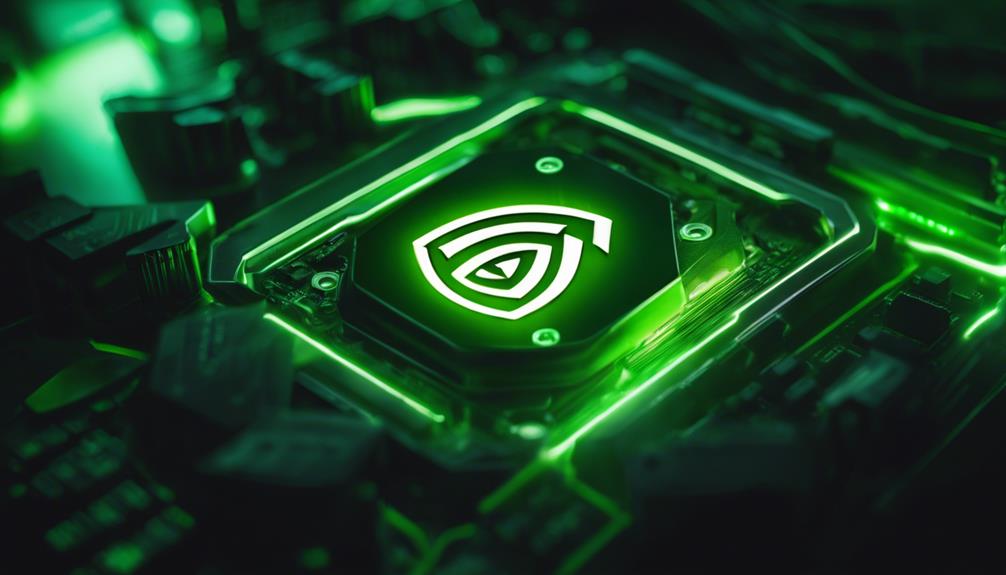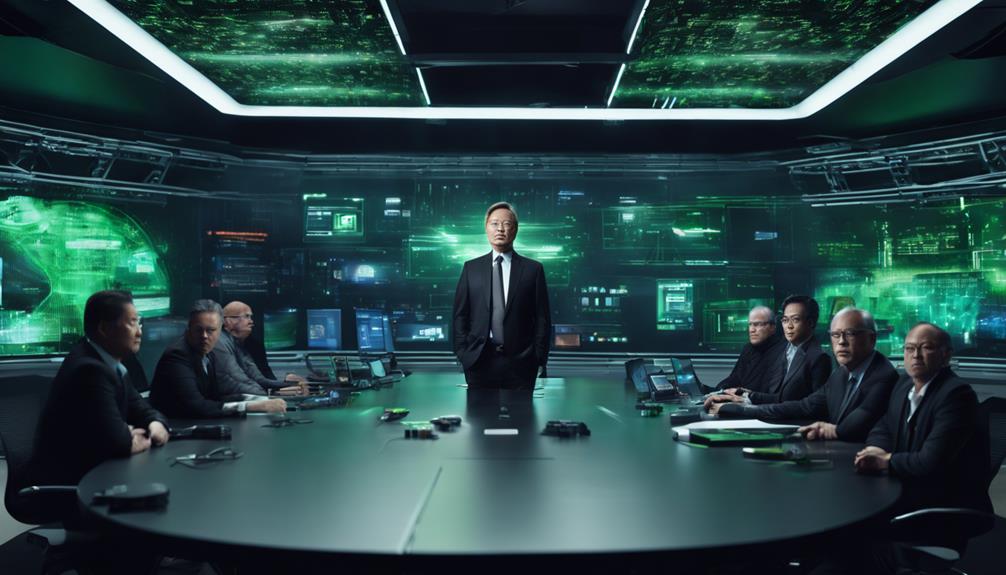Jensen Huang has declined AMD’s merger proposal, which is a pivotal moment in tech history. The two companies have had diverging visions since unsuccessful merger attempts in the mid-2000s. Huang’s insistence on leadership has caused tensions, showcasing a clash in corporate philosophies. While AMD aimed to boost competitiveness, Nvidia’s focus on innovation and market dominance resulted in major investments in AI. Nvidia’s unique strategy has helped it to capture over 80% of the AI chip market share, shaping the future of the industry. This rejection has prompted both companies to pursue their own paths, leading to interesting developments that are worth exploring.
Key Takeaways
- Jensen Huang's insistence on becoming CEO of the merged entity created significant tension with AMD's leadership during the mid-2000s merger discussions.
- The valuation disparity, with AMD's market cap at $288 billion compared to Nvidia's $3.1 trillion, complicated merger negotiations.
- AMD's focus on enhancing competitiveness against Intel led them to acquire ATI instead of pursuing the merger with Nvidia.
- Former AMD engineers noted that differing corporate philosophies contributed to the separate paths of Nvidia and AMD post-merger attempt.
Historical Merger Attempts
In the mid-2000s, Nvidia and AMD attempted a high-stakes merger that ultimately unraveled due to conflicting leadership visions and corporate strategies.
Nvidia's CEO, Jensen Huang, insisted on becoming the CEO of the combined entity, a demand that raised eyebrows within AMD's ranks. At that time, AMD's market cap stood at $288 billion, while Nvidia's soared to $3.1 trillion, showcasing the vast disparity in their valuations.
AMD considered this merger as a strategic move to boost its competitiveness against Intel. Instead, AMD opted to acquire ATI for $5.4 billion in July 2006, marking a pivotal shift in its strategy.
The failed merger reflected deeper issues in corporate alignment and vision between the two tech giants.
Insights From AMD Engineers

Former AMD engineers have shed light on the complex dynamics surrounding the failed merger with Nvidia, emphasizing the importance of long-term vision in corporate strategy.
Hemant Mohapatra, a former engineer at AMD, shared insights on X, highlighting Nvidia's strategic focus under CEO Jensen Huang. He noted that Huang's refusal to sell stemmed from a desire to secure user loyalty, a strategy that diverged notably from AMD's approach.
Current AMD engineer Phil Park backed Mohapatra's observations, reinforcing the notion that AMD's hesitance led both companies down separate paths.
This divergence underscores how differing corporate philosophies can reshape industry landscapes, illustrating the critical role of leadership in steering high-stakes negotiations and strategic decisions.
Nvidia's Market Leadership

Nvidia's strategic decisions have solidified its position as a dominant force in the AI chip market, capturing over 80% of the industry share. The company's multi-billion dollar investments in AI technologies since 2006 have provided a significant competitive edge, allowing it to stay ahead of rivals.
Nvidia's chips are powering major applications like OpenAI's ChatGPT, further showcasing their technological leadership. The recent AI boom has only amplified this dominance, compelling competitors to shift focus towards in-house chip production.
With its innovative approach and commitment to advancing AI capabilities, Nvidia continues to lead the charge in shaping the future of the industry, leaving other players endeavoring to catch up in an increasingly competitive landscape.
Industry Impact of the Merger

How would the tech landscape have shifted if the merger between AMD and Nvidia had succeeded?
The combined powerhouse could have revolutionized the graphics and AI sectors, offering unmatched innovation and market reach. With Nvidia's advanced AI capabilities and AMD's competitive pricing strategies, consumers would likely have seen a broader range of powerful products at lower prices.
The merger might've also led to accelerated advancements in GPU technology, prompting competitors to innovate more rapidly.
However, the absence of this merger allowed both companies to carve out distinct identities, leading to Nvidia's dominance in AI and AMD's resurgence in gaming.
Ultimately, the failed merger shaped the competitive dynamics, driving each company to pursue unique strategies in an evolving tech landscape.
Trends in Business Strategy

Business strategies in the tech industry are increasingly focused on innovation, competitive differentiation, and strategic partnerships to adapt to rapid market changes.
Companies like Nvidia leverage their technological expertise to establish market dominance, particularly in AI chip production. By prioritizing in-house chip development, firms aim to enhance their competitive edge and meet evolving consumer demands.
Leadership dynamics, as seen in Huang's rejection of the AMD merger, play a significant role in shaping strategic decisions. Understanding competitor strategies and market conditions is essential for long-term success.
In a landscape marked by fierce competition, organizations must continuously innovate and forge strategic alliances to navigate challenges and seize emerging opportunities for growth.
How Does Nvidia’s Rejection of AMD Merger Proposal Affect the Packaging Industry?
Nvidia’s rejection of AMD’s merger proposal does not have a direct impact on the packaging industry. However, understanding the secrets of packaging success, such as innovative design and sustainable materials, can still drive success within the industry regardless of mergers and acquisitions in the technology sector.
Conclusion
To sum up, the failed merger between Nvidia and AMD highlights the complexities of corporate negotiations and differing visions.
Nvidia's decision to pursue its path led to remarkable success, particularly in the AI chip market, where it now holds over 80% of the share.
This statistic underscores the importance of strategic alignment in mergers and acquisitions.
As the tech industry continues to evolve, lessons from this pivotal moment will guide future endeavors and shape the competitive landscape.









